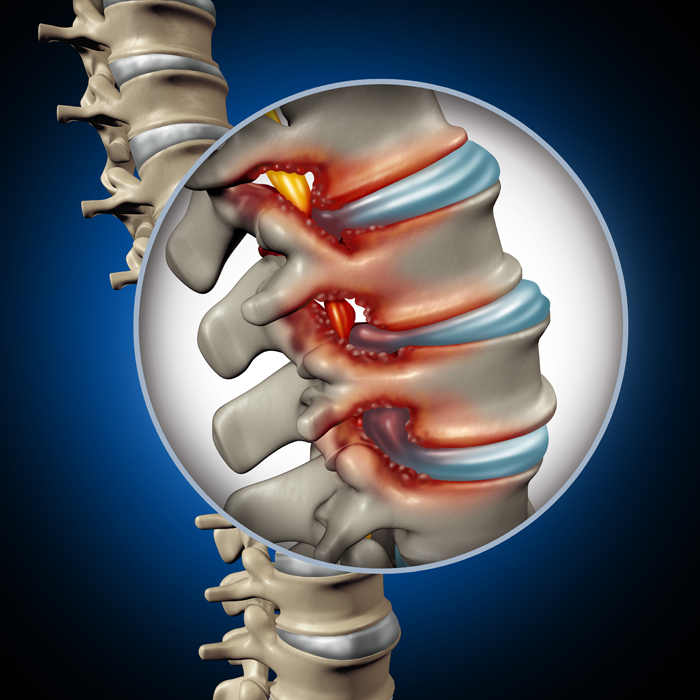Spinal Stenosis Treatment in Sadashiv Peth, Pune
Spinal stenosis occurs when the openings in the bone start to get narrow in your spine which in return exerts pressure on the nerves traveling through the spine. The areas where spinal stenosis can often occur are the neck and the lower back. Though, spinal stenosis can occur anywhere down the spine.
Sometimes there may not be any symptoms for the people who are having spinal stenosis. But pain, numbness, and muscle weakness can be experienced by others who are having spinal stenosis. Typically, spinal stenosis is caused when there is wear and tear in the spine which has osteoarthritis. In serious spinal stenosis conditions, patients are recommended by their doctors to undergo surgery to create extra space for the nerves which are traveling through the spine.

What are the types of Spinal Stenosis?
Normally, there are two types of spinal stenosis depending on the position of the condition that occurred in the spine. The types of spinal stenosis are as follows:
- Cervical Stenosis: This condition occurs when part of the spine near your neck starts to get narrow.
- Lumbar stenosis: This condition occurs when part of the spine near your lower back starts to get narrow. Lumbar stenosis is the most typical form of spinal stenosis.
What are the symptoms of spinal stenosis?
Sometimes, spinal stenosis in people shows no symptoms and only gets diagnosed by an MRI or CT scan. Spinal stenosis gets worse with time and the symptoms depend on the location of the stenosis in the spine and the type of nerve affected.
When someone is having cervical stenosis he/she may have the following symptoms:
- There will be numbness in your hand, arm, and leg, and also you can feel a tingling effect in your arm and leg.
- You will find your arm and leg to be very weak and have difficulties with heavy objects.
- You will have problems while walking and keeping your balance or coordination.
- Cervical stenosis occurs near the neck, thus neck pain is a common occurrence.
When someone is having lumbar stenosis he/she may have the following symptoms:
- There will be numbness and tingling effect in your foot or leg.
- There will be a weakness in your legs and it will be difficult to stand or walk for a long period as it will cause pain and cramps in both legs.
- Lumbar stenosis occurs near the lower back, thus back pain is a common occurrence.
When Do You Visit a Doctor?
Normally, you want to visit a doctor or a surgeon when you have symptoms such as neck pain, back pain, numbness in your leg or arm, etc. The main point is that an individual should visit a doctor if he/she is feeling uncomfortable and having a problem doing daily work. An individual must opt for surgery only after he/she has tried nonoperative treatments such as physiotherapy, exercises, etc. and is not satisfied with it.
Request an appointment at Apollo Spectra Hospitals, Swargate, Pune
Call 1860-500-2244 to book an appointment
What are the Causes of Spinal Stenosis?
Spinal stenosis can be caused by the following factors:
- Spinal Osteoarthritis: When there is wear and tear in the smooth cartilage which covers the facet joints the bones start to rub against each other causing abnormal bone growth which is also known as bone spurs. This causes inflammation which further results in the narrowing of the foramina.
- Tumors: This happens when there is an abnormal growth inside the spinal cord and the space between the spinal cord and the vertebrae. These are not normal and are only identifiable with an MRI and CT scan.
- Spinal Injuries: During a car accident or any trauma fractures in one or two vertebrae can occur. Thus in a spinal fracture, the displaced bone can damage the spinal canal and its contents. Back surgery causes immediate swelling of the tissues which can exert pressure on the spinal cord or nerves.
What are the Risks?
Spinal stenosis occurs in people who are above the age of 50. But, spinal stenosis can occur at a young age because of degenerative changes. There are other causes such as spinal fracture, trauma, etc. If untreated spinal stenosis can prolong and cause permanent numbness, pain, weakness, paralysis, etc.
Conclusion:
Spinal stenosis is the narrowing of the bone in your spinal cord which exerts pressure on the nerves. This occurs normally in people who are above the age of 50.
Spinal stenosis does not progress that easily, but if untreated it can cause severe pain and dysfunction.
Relying on anti-inflammatory drugs and pain killers to reduce the pain can worsen spinal stenosis.
Symptoms
Our Top Specialities
NOTICE BOARD
CONTACT US
CONTACT US
 Book Appointment
Book Appointment


.svg)
.svg)
.svg)
.svg)








